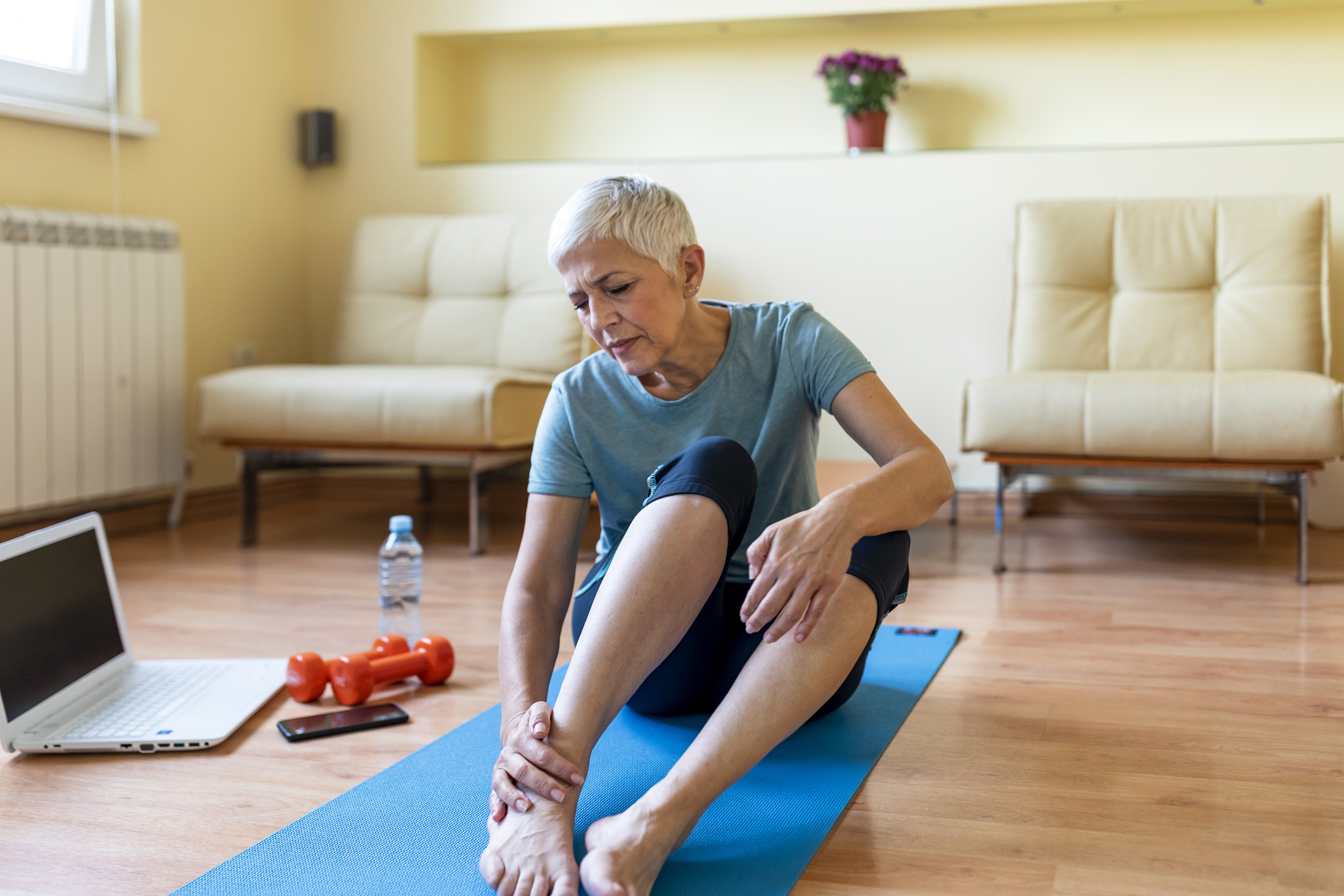Get Easy Health Digest™ in your inbox and don’t miss a thing when you subscribe today. Plus, get the free bonus report, Mother Nature’s Tips, Tricks and Remedies for Cholesterol, Blood Pressure & Blood Sugar as my way of saying welcome to the community!
Why your feet hurt and 7+ ways to stop it

Shoes can make quite a fashion statement, but certain stylish footwear can cause serious pain. Many women seem willing to trade off comfort for the appearance of longer, slimmer legs despite the very real damage these classic shoes can cause their feet, muscles, knees, joints and skeletal frame.
Should you give them up? It would probably be best. But if you’re not ready to do that yet, there are some common sense ways to give up the pain and reduce the damage without giving up your fashion sense.
Why heels are such heels to your feet
Research examining how your feet react to wearing high heels confirms what many women have experienced: Shoes with elevated heels can lead to muscle problems as well as foot and heel pain.
According to one study, wearing high heels (shoes with heels of about 4 inches or more), causes the muscles of the lower foot to become unbalanced. That can lead to ankle injuries when you wear them more than a couple of times a week.
And when researchers took a look at the foot health of people involved in the Framingham Heart Study, they found that women who frequently wore high heels and pumps experienced much more ankle and heel pain.
In a European study, they found that wearing high heels does alter pelvic positions and “could lead to long-term pathologic alterations.”
And in a clinical trial published in the Journal of Applied Biomechanics, high heels might be the single most significant reason that more women than men get osteoarthritis of the knee.
So the argument seems pretty stacked. But if you think ditching your heels for flats will save your feet, you should know they also have some serious drawbacks…
Flats fall flat on being any better for your feet
The problem with flats is lack of support. Your feet aren’t flat like pancakes — they have an arch and it needs to be supported.
According to the Integrative Foot and Ankle Center of Washington, ballet flats and flip flops fall right behind high heels in their list of the worse shoes for your feet. Shoes that lack arch support can cause the ligaments and tendons along the bottom of your feet to overstretch and collapse. The can result in a painful burning condition known as plantar fasciitis.
If you’d like to wear flats, choose ones with cushioned insoles and arch support. But as far as flip flops — relegate them to poolside-use only, and definitely refrain from wearing them or ballet flats when you plan to do a lot of walking. A friend of mine reports that shin pain can develop when walking too far or too much in flats.
Dr. Mark Wiley offers tips on reducing the pain of plantar fasciitis, here.
Modify your high heel style to experience less pain and damage
Of course many of my friends believe that a little discomfort is worth it to be fashionable. That being said, there are ways to wear your stylish high heels and reduce the pain and damage to your feet, knees, hips and lower back at the same time.
When it comes to high heels:
- Don’t wear high heels at times you’ll be doing a lot of walking. If you sit a lot at the office, take advantage of wearing them there. Or on a night out when you’ll be sitting at dinner or going to the theater.
- Limit how often you wear high heels. Most experts recommend that if you must wear high heels, limit the number of days you wear them to just 2 days a week.
- Choose a heel height within reason. Stilettos can range from one inch to 10 inches. Wearing these shoes pushes your weight to the front so it all sits on the ball of your foot. Avoid wearing anything higher than one and a half inches.
- Choose wider heels. Stilettos are named aptly for the pencil-thin heel akin to a stiletto knife. Wider heels and wedge-style heels provide better balance and less risk of injury to your ankles. But still limit the height of the heel to 1.5 inches.
- Choose heels with ankle support. ‘Bootie’ style heels, that look more or less like a full shoe that covers your entire foot and extends up the ankle a couple of inches, provide much-needed ankle support.
- Avoid pointy-toed high heels. Gravity will push your toes farther into the front of your high heels. Wearing pointy-toed heels compounds pain and causes blisters, bunions, hammertoes and can lead to neuroma — an inflammation of the nerve between the toes. If you really, really like the classic style of a pointy-toed heel, go for a ‘kitten’ heel.
- Keep good walking shoes with you. If you have a killer pair of 3 inch heels you’re just dying to wear to the office or for a special event, bring a pair of comfortable walking shoes to wear on your commute.
Kitten heels are a great choice for style and comfort. These shoes say ‘class’ all the way with a low stiletto heel that won’t force your toes so harshly into the front of your shoe. And according to fashion editor, Jess Cartner-Morley, shorter heels can do even more for your posture than too-high heels that throw you off balance.
So you see it is possible to wear a great looking pair of heels smartly, as long as you don’t let your fashion sense overrule your common sense. A little bit of discretion now could help you avoid debilitating injuries and chronic pain down the road.
But for daily use invest in a comfortable pair of shoes with great insole support, and enough padding to pamper your heels.












